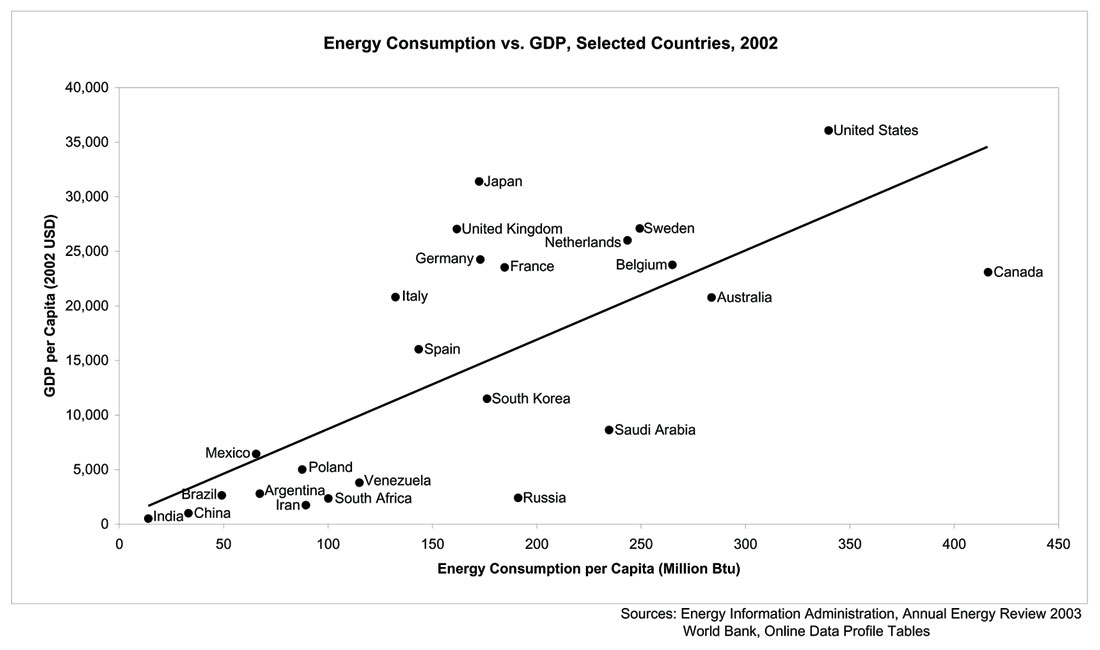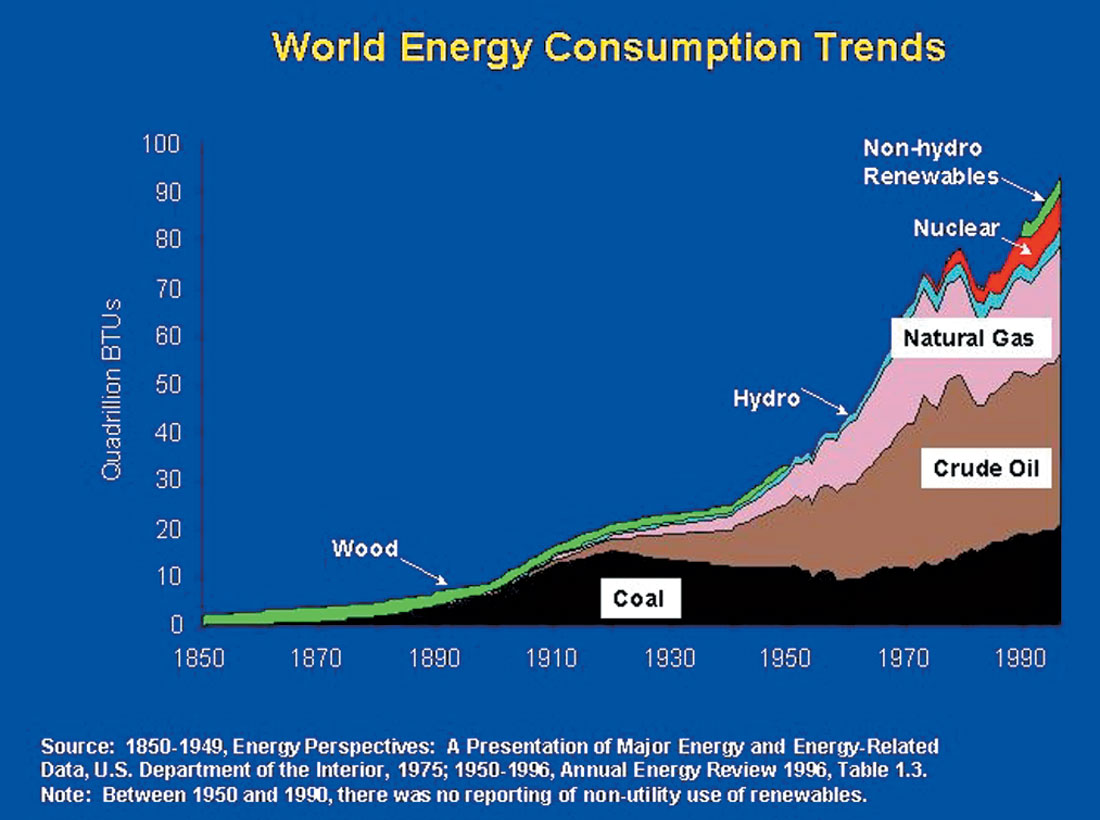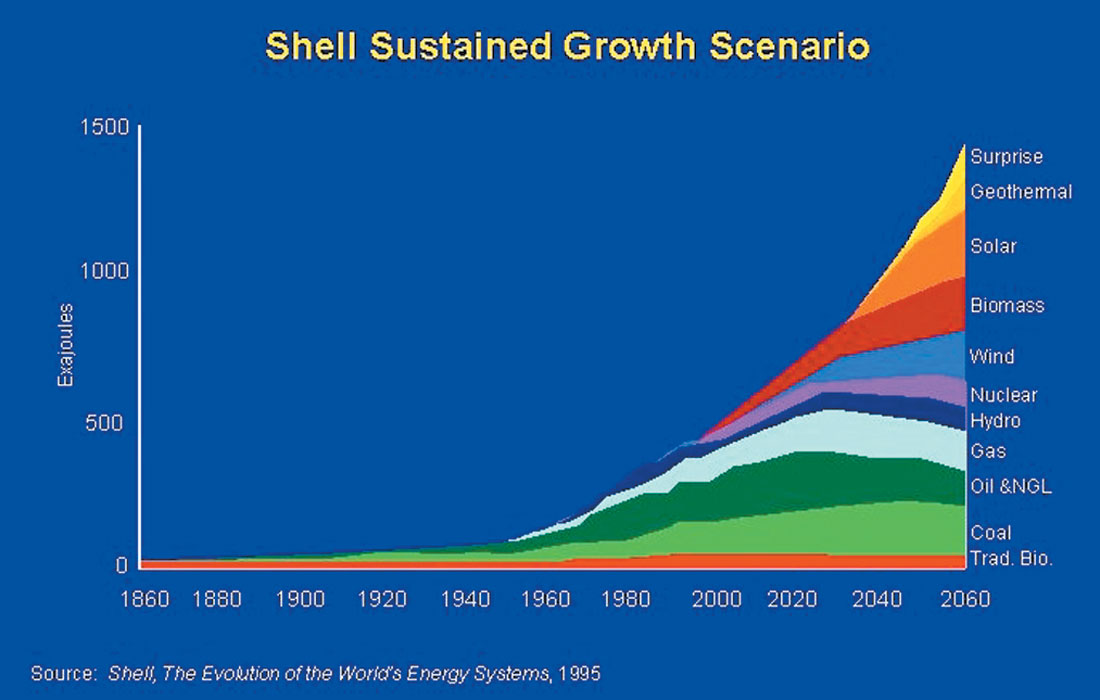Introduction
Energy is the key driver that underlies modern civilization and industrial development. Without access to energy sources that are affordable and reliable, no nation will attain or maintain the competitive base needed to improve or advance the lot of its citizens. Although many argue that access to such critical elements as food and water constitute the most important concerns, as a practical matter the absence of energy to transform raw materials, provide heating and lighting and transportation will serve ultimately to limit prosperity while access to water and food may only ensure survival.
When we imagine the term “energy”, we tend to think of two primary sources – fuels for transportation (typically based on oil) and the generation of electricity. In general, most of the technology to transform raw fuels into usable energy is based on thermal conversion, either in the form of internal combustion engines or power plants that rely on coal or natural gas for creating electricity.
The mix of energy sources that supplies most of the developed world is based on these thermal technologies; the sources available to developing nations are also based on thermal, but the technology involved is decidedly lower technology and is primarily biomass, i.e. wood. This relationship explains or highlights the fundamental interconnectedness between energy access and economic development as shown in Figure 1.

Graphic by John Anderson, Graduate Research Assistant, ISEEE
The use of energy, however, is not free. The costs are not just in acquiring, refining or transporting fuels, but in the consumption of them in the form of heat generation and toxic byproducts. Understanding the correlation between these issues is the reason behind the creation of the Institute for Sustainable Energy, Environment and Economy (ISEEE) at the University of Calgary, an academic experiment designed to demonstrate how the interaction between energy, environmental and economic issues can help to inform better decision-making.
The modern world is witnessing an unfolding conflict of ever-increasing demand for energy in all forms, a demand which may prove to be unsustainable across the board if the world’s developing nations adopt the conventional energy delivery and consumption systems of the developed world. This is illustrated well in Figure 2, which shows the transition of energy fuels, largely following the onset of the Industrial Revolution, from inefficient biomass such as wood, through coal and now natural gas, renewable energy and even nuclear energy.

Ultimately, of course, fossil fuel sources by definition will decline in absolute amount. Reputable estimates suggest this decline may have already begun; others project the mid-century before that occurs. In the meantime, however, we continue to rely on fossil fuels as our base commodity, while recognizing that a shift must occur to more sustainable sources in the future.
In developing as well as developed nations, demand for energy and electricity is growing at faster rates than current supplies. Growth in demand for electricity can exceed 6% in countries like China and India, where high population growth rates may average 3% per annum. The same is true for Canada, a nation blessed with abundant reserves of fossil fuels and vast sources of hydropower. Even here, however, we cannot assume an uninterrupted energy future. Reserve estimates are declining, Kyoto-type limits are constraining future development projects, and increasing demand is straining current systems. Figure 3 graphs the forecasts for energy requirements and sources until 2060.

Faced with this reality, Canada has begun to think out of the traditional “energy box”. With the help of institutions such as the University of Calgary and ISEEE, the Alberta and federal governments have begun to imagine energy systems of the future that will employ and rely on alternative energy sources and systems design. A review of these systems will reveal an exciting world of opportunity that will transform living environments and economic commerce.
This world will see a mix of distributed energy resources which are based on non-centralized systems, often serving loads distant from current high-demand centres such as large metropolitan areas. Similarly, we are likely to see an increase in demand for alternative fuels and technologies such as wind power, geothermal resources, photovoltaic cells and biomass to supplement and strengthen the power grid with which we are so familiar.
The Role of ISEEE
ISEEE has grown out of recognition of the need to address the full range of costs involved in fossil fuel utilization, from extraction to geological sequestration. The University of Calgary recognized that the traditional academic tools for studying the interaction between issue areas limited adaptability and innovation, and typically did not involve a multidisciplinary approach. The charge to the new Institute was to find ways to integrate research models and problem solving with the clear objective of creating better policy and public programs.
A key objective for ISEEE researchers is to understand the changing nature of power demand in the future and to imagine how alternative energy technologies can be blended in to meet that demand growth in ways that are cost effective and also rewarding to investors.
The ISEEE model is based on taking advantage of multi-disciplinary talent and strengths in the academic research and industrial communities. It has emerged from the strength of exploring fossil energy reserves and understanding how they are used and can be supplemented or substituted within the energy system. ISEEE is focused on bringing diverse research capability from disciplines as traditional as engineering, geosciences and economics together with demographers, social scientists and others who face a common issue: How will society satisfy its need for continued energy supplies while sustaining an environment where quality – including quality of life – is the hallmark of success?
The Opportunity of Alternative Energy
Diversifying and strengthening our energy system is a clear priority throughout North America but the path to this goal is not clear and universally acknowledged, especially when public investment is involved. For instance, a clear challenge to those who hope to provide tools to policy-makers in this area is to identify the relative costs and benefits of creating alternatives. This entails gaining a clearer understanding of what energy resources remain for us to utilize, as well as the potential for using them in a more efficient manner. In short, ISEEE researchers are exploring the life-cycle relationship of energy to social development.
A key component of this first step is to increase our understanding of the demand characteristics of the built environment. Canada, Alberta in particular, is experiencing major increases in population growth, which brings with it new jobs, new industry and the underlying energy increases that will support them. Since most of the new economic development will occur relatively close to the border of the United States, issues of transmission, shared facilities, pollution control and economic ownership tend to dominate the policy discussions and influence both private and public energy infrastructure investment.
The obvious next steps involve the integration of alternatives, such as renewable energy or distributed generation within the evolving grid system. Initially, however, the policy-makers must take advantage of demand side management and mitigation, since dealing solely with the supply elements only manages onehalf of the equation. Thus, the sustainable energy future of Alberta and, by inference, Canada, will involve a mix of cost-effective, reliable and productive energy choices.
These will not be attainable without a wide range of cooperation between government, regulators, investors and the public at large. The challenge, therefore, for an institute such as ISEEE is to explore the capabilities of new technologies that integrate well into the overall energy system while providing good financial incentives for investment.
Much of this vision incorporates the emerging technologies in the renewable energy portfolio, such as wind, photovoltaic cells, fuel cells, geothermal energy and biomass conversion. Taken alone, these sources, while attractive, do not represent a large enough pool of energy to satisfy current, let alone future, demands. When coupled with existing fossil energy, however, they represent an opportunity to fine-tune the system and wean ourselves from a narrow suite of technologies and substitute wider diversity and ultimately lower costs. This is accomplished not through simple addition of wind power, for instance, because wind is not constant nor in plentiful supply everywhere in the province or in the nation. Wind power characteristics, though, lend themselves very well as a supplement to fossil generation at key times in the day, offsetting expensive thermal power and limiting overall emissions.
Conclusions
By carefully assessing the characteristics of different energy technologies, we can blend them into the grid of the future in ways that enhance not only community design, but lifestyle choices and overall sustained economic development.
Here again is evidence of the new model of research and innovation being pioneered at ISEEE. By taking into account technology characteristics and using them to assess needs and potential in the market, more powerful, flexible and timely policies can be developed which guide development, provide a strong rationale for permits and public support, and create a firmer basis for investment while limiting negative outcomes.
The model created by ISEEE is designed to be inclusive and interdisciplinary. There is a critical role to be filled by disciplines such as geoscience to help develop and implement this new paradigm of crossing disciplinary boundaries and bringing novel analytic techniques to bear on problems that will span multiple areas. In making the shift to this integrated, collaborative approach, there is a common theme – decision-makers who must use the advice of experts need new models of the energy world that reveal the overlap and conflict in information and choices in the decisions they make.
Renewable and other alternative energy system design provide the tools to illustrate the power of diverse portfolio research, underlie the ongoing need for innovation in order to stay competitive and productive, and emphasize the critical need to think across traditional boundaries.











Join the Conversation
Interested in starting, or contributing to a conversation about an article or issue of the RECORDER? Join our CSEG LinkedIn Group.
Share This Article